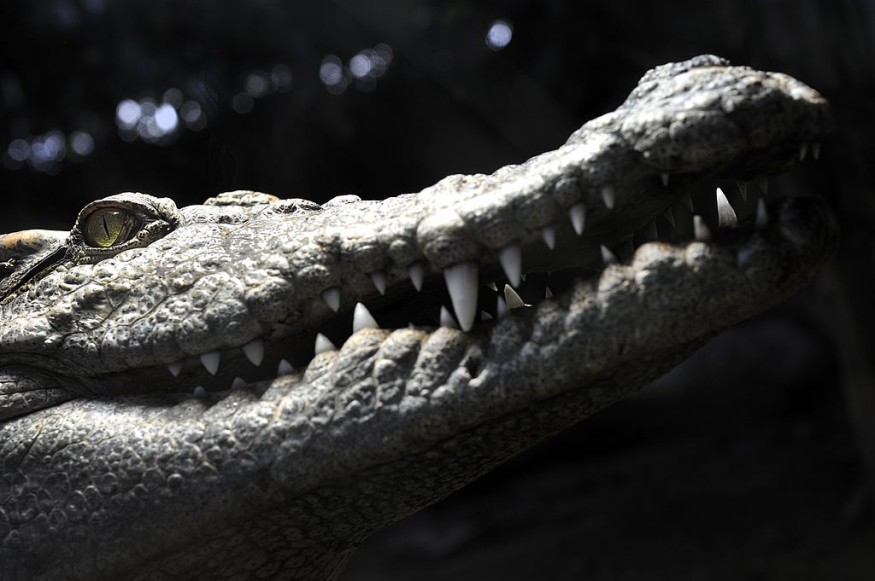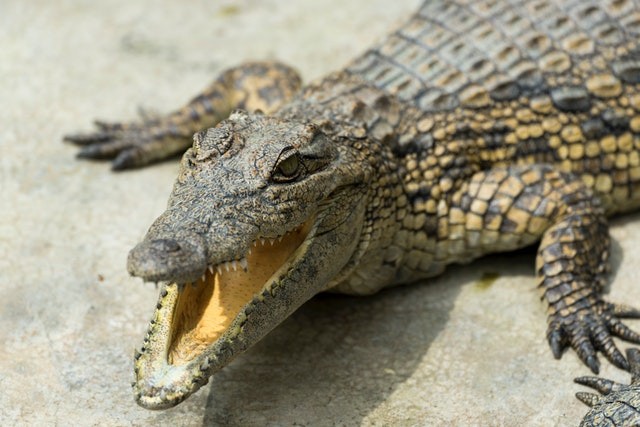According to Australian scientists, a new crocodile species has been identified, which may have eaten a dinosaur as its last meal.

Shocking Discovery
Broken Dinosaur Killer, a crocodile that has been fossilized, was discovered on a sheep station in Queensland's outback and is thought to be over 95 million years old.
Scientists shocked scientists to discover the fragmentary bones of a juvenile ornithopod dinosaur within the crocodile's stomach.
The discovery was described as "amazing" by Matt White of the Australian Age of Dinosaurs Museum.
Dr. White added, "This is the first time a crocodile has been discovered with dinosaur remains in its stomach."
Taking Time
Paleontologists discovered the fossil in 2010, and it took them more than six years to piece it all together.
It's also the first indication that crocodiles ate dinosaurs in Australia, as it's the first skeletal remains of an ornithopod ever found in the area.
He went on: "The connection and behavior of creatures that lived in Australia millions of years ago will continue to be revealed by the relationship and behavior of this prehistoric crocodile and its last meal."
Ornithopods, little plant-eaters with teeth on their cheeks and beaks, were known to have inhabited the Earth more than 100 million years ago.
"It was a pretty cute tiny dinosaur, perhaps around 1.2 kilos larger than a chicken," Dr. White remarked.
Using traditional procedures, researchers employed modern technology to create an X-ray photograph of the fossil since the bones were too delicate to be extracted from the ground.
He then utilized the scanned data files to digitally prepare the material for a 3D reconstruction of the bones.
Dr. White added, "The technology we're utilizing is bringing fresh life into what we can see within these fossils."
The saltwater crocodile, which has been at the top of the food chain for millions of years, is one of Australia's deadliest species.
They are the world's largest reptiles, with an average length of 5 to 7 meters. Crocs hunt in Australia's tropical wetlands, including rivers, lakes, and even the ocean borders.
Crocodiles

Like the renowned dinosaurs, Crocodiles are ancient species that initially appeared during the Mesozoic Era approximately 240 million years ago. But how did these crocodiles escape the K/T Extinction's chaos?
How they Survive?
Dinosaurs appeared in various sizes and forms, ranging from little chicks the size of a crow to massive elephant-legged creatures. In contrast, for 200 million years, crocodiles have had the same body like humans. They're perfect instances of "if it ain't busted, don't repair it."
This may have given them a significant edge. During the accident, their short legs and low-slung posture may have helped them to literally "keep their heads down."
Massive animals inhabited the ocean seas toward the end of the Cretaceous epoch, with sharks ten times the great white and even carnivores larger than blue whales. Like their land-dwelling cousins, these sea-dwelling mosasaurs were wiped off by extinction.
On the other hand, freshwater rivers and lakes were less affected by the asteroid for some reason. Crocodiles could survive because of their amphibious lifestyle, which allowed them to avoid land and sea calamities by roaming the rivers.
For more prehistoric news, don't forget to follow Nature World News!
© 2025 NatureWorldNews.com All rights reserved. Do not reproduce without permission.

